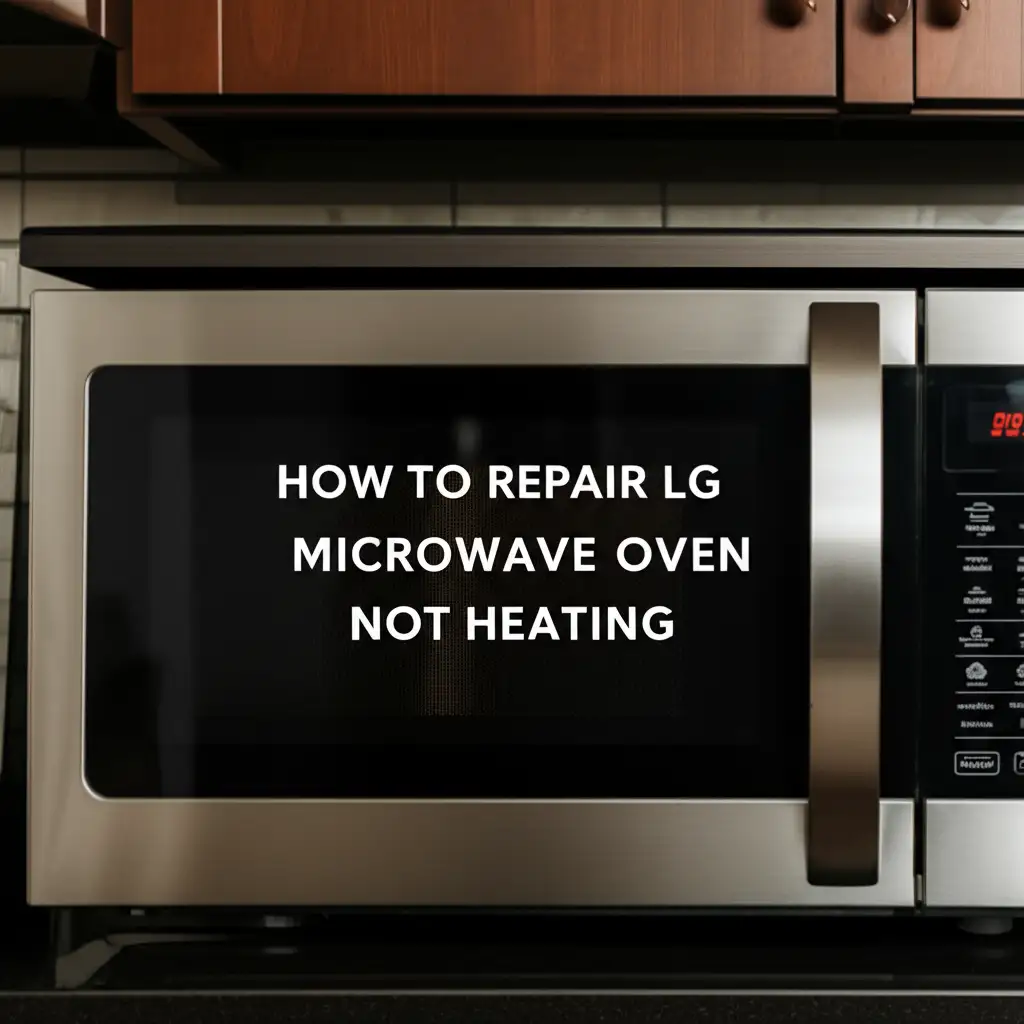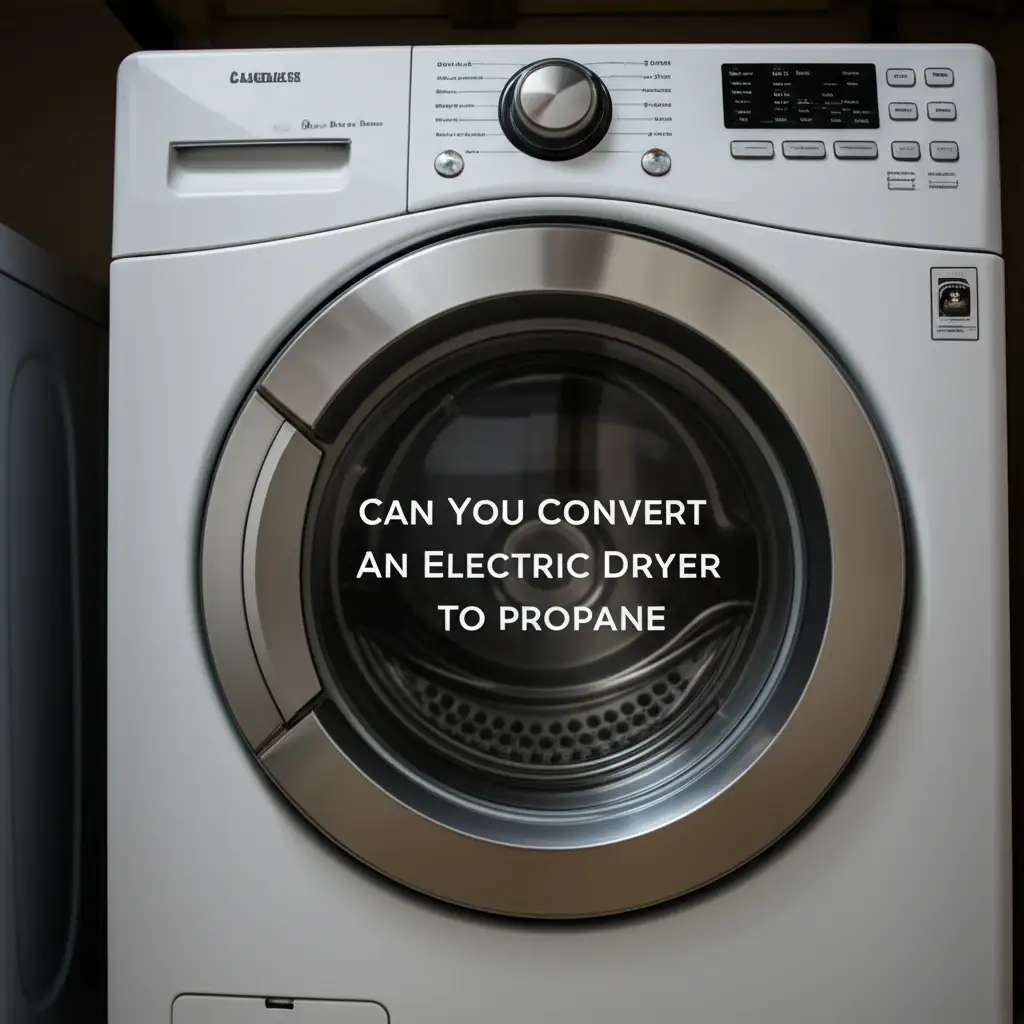· Todd Martin · Home Appliances · 22 min read
Why Does My Electric Dryer Trip Circuit Breaker

Electric Dryer Tripping Breaker? Find Out Why
It can be really frustrating when your electric dryer suddenly stops working. One moment, your clothes are tumbling away, and the next, everything goes dark. Often, a tripped circuit breaker is the culprit. When your electric dryer trips circuit breaker, it means an electrical fault or overload occurred.
Understanding why your electric dryer causes a circuit breaker to trip is important. It helps you diagnose the problem. It also ensures your home’s electrical safety. I know this issue can be a mystery for many homeowners. This article will explain the common reasons behind this problem. We will cover everything from simple overloads to complex component failures. You will learn how to troubleshoot and fix these issues. This guide provides clear, actionable steps. Let’s make sure your laundry routine runs smoothly again.
Takeaway
When your electric dryer trips circuit breaker, here are key takeaways:
- Safety First: Always prioritize safety. Disconnect power before inspection.
- Common Causes: Overloaded circuits, short circuits, or ground faults are primary culprits.
- Component Issues: Faulty heating elements, motors, or thermostats can cause trips.
- Ventilation: Blocked dryer vents lead to overheating and trips.
- Power Supply: Issues with the outlet or house wiring can be the source.
- Professional Help: Call an electrician for persistent or complex electrical problems.
Why Does My Electric Dryer Trip Circuit Breaker?
An electric dryer typically trips its circuit breaker due to an overload, a short circuit, or a ground fault. This safety mechanism protects your wiring from damage. Common issues include faulty dryer components like the heating element or motor, a clogged vent causing overheating, or problems with your home’s electrical circuit.
Understanding Your Circuit Breaker and Electrical System
A circuit breaker is a safety device in your home’s electrical panel. It protects electrical circuits from damage. This damage can happen from an overload or a short circuit. When an appliance draws too much current, the breaker trips. It cuts off power to that circuit. This prevents overheating wires and potential fires.
Think of it as an automatic switch. If the current flowing through the circuit becomes too high, the breaker “breaks” the circuit. This action is instant. It keeps your home and appliances safe. For an electric dryer, which uses a significant amount of power, having a dedicated circuit is crucial. My house has a 30-amp, 240-volt circuit for the dryer. This type of circuit handles the high power demands of an electric dryer. This is why you need to understand your electrical system when diagnosing a tripped breaker.
Most electric dryers run on a 240-volt circuit. This is different from the standard 120-volt outlets used for smaller appliances. This higher voltage powers the dryer’s heating element and motor efficiently. If the dryer’s power requirements exceed what the circuit can safely provide, the breaker trips. This is its job. It signals a problem. It might be an issue with the dryer itself or with the circuit it connects to. When your electric dryer trips circuit breaker, it indicates a safety response.
This safety response is vital. It stops electrical current when a problem occurs. This prevents damage to your home’s wiring. It also protects the dryer itself. Understanding this basic function is the first step in troubleshooting why your dryer keeps tripping the breaker. It ensures you approach the problem safely. It also helps you understand the electrical demands of your large appliances.
Overloaded Circuits and Power Demands
One common reason an electric dryer trips its circuit breaker is an overloaded circuit. This happens when too many appliances draw power from the same circuit. Your dryer requires a lot of electricity. It usually needs its own dedicated circuit. If other high-power devices are plugged into the same circuit, it can easily exceed the breaker’s capacity. This causes the breaker to trip as a safety measure.
Even if your dryer is on a dedicated circuit, sometimes other factors can contribute to an overload. For example, if the dryer itself is struggling, it might draw more current. A worn-out motor or a failing heating element can increase power consumption. This increased demand can push the circuit beyond its limits. The breaker then trips to prevent overheating. It is important to consider all potential sources of current draw on that specific circuit. This includes anything that shares the circuit, even if it’s not the dryer itself.
To determine if you have an overloaded circuit, check your electrical panel. See what other outlets or appliances are connected to the same breaker. Most electric dryers are on a 30-amp, 240-volt circuit. This circuit should not power anything else. If it does, you have found a potential problem. Consider spreading out your appliance usage. Avoid running your dryer at the same time as other high-draw items like an electric oven or air conditioner. This simple step can often prevent nuisance trips. If your electric dryer keeps tripping the breaker, and you suspect an overload, start by isolating the dryer. This helps you confirm if the issue is power demand.
Sometimes, the circuit breaker itself might be weak. An old or faulty breaker can trip even when the load is within its limits. In such cases, the breaker might need replacement. Always consult a qualified electrician for breaker replacement. They ensure proper installation and safety. Understanding how your dryer demands power helps you troubleshoot efficiently.
Faulty Dryer Components Causing Breaker Trips
Several internal components within your electric dryer can fail. These failures often lead to a tripped circuit breaker. The dryer’s operation relies on a complex interplay of electrical parts. When one part malfunctions, it can create an electrical fault. This fault causes the breaker to trip. Diagnosing these components is key to fixing the problem.
Heating Element Problems
The heating element is a common culprit. It’s responsible for generating the heat that dries your clothes. Over time, the coils inside the element can wear out or break. A partially broken element might touch the dryer’s metal casing. This creates a short circuit or a ground fault. Either of these conditions will immediately trip the breaker.
If your dryer runs but does not heat, or only heats intermittently, the heating element might be failing. Inspecting the element often requires removing the dryer’s back panel. Look for visible breaks or signs of scorching on the coils. Testing it with a multimeter can confirm if it has continuity. A faulty heating element is a frequent reason why an electric dryer trips circuit breaker. Replacing a heating element can be a DIY task for some. Always disconnect power first.
Dryer Motor Issues
The dryer motor powers the drum’s rotation and the blower fan. If the motor is failing, it can draw excessive current. This happens as it struggles to operate. An overloaded motor quickly trips the breaker. You might hear unusual noises like humming, grinding, or squealing before the trip occurs.
A motor can also develop an internal short circuit. This directly causes the breaker to trip. Check if the dryer drum spins freely by hand when unplugged. A stiff or seized drum puts extra strain on the motor. Lubricating the motor bearings or replacing the motor assembly might be necessary. A failing motor demands more power. This consistently causes your electric dryer to trip circuit breaker. Consider if your electric dryer takes so long to dry. This could be related to a struggling motor or heating issue.
Thermostats and Thermal Fuse Malfunctions
Electric dryers have multiple thermostats and a thermal fuse. These components monitor and regulate the dryer’s temperature. They prevent overheating. If a thermostat fails, it might not properly regulate the heat. This can lead to the dryer getting too hot. This excessive heat can trip a thermal cutoff fuse or, less commonly, the main breaker.
The thermal fuse is a one-time safety device. It blows when temperatures exceed a safe limit. Once it blows, it must be replaced. A tripped thermal fuse often indicates an underlying problem. This includes a clogged vent or a faulty cycling thermostat. You should address the root cause, not just replace the fuse. Ignoring these signs means your electric dryer will trip circuit breaker again quickly.
Faulty Wiring or Connections
Internal wiring in the dryer can become loose or frayed over time. These issues can create a short circuit against the dryer’s metal frame. A loose wire connection at the terminal block where the power cord connects is another common spot for problems. Always inspect these connections carefully. Ensure they are tight and secure. Any exposed wire can cause a ground fault. This instantly trips the breaker.
Sometimes, the dryer’s power cord itself might be damaged. Look for signs of burning, fraying, or melted insulation. A damaged cord needs immediate replacement. Never use a dryer with a compromised power cord. Faulty wiring is a serious safety hazard. It needs immediate attention. When dealing with wiring, if you are unsure, call a professional.
Venting Problems and Overheating
One often overlooked cause for an electric dryer to trip its circuit breaker is poor ventilation. Dryers produce hot, moist air during operation. This air needs a clear path to exit your home. If the dryer vent becomes clogged, lint and debris can accumulate. This traps heat inside the dryer. The dryer then overheats. This overheating triggers internal safety mechanisms, which can lead to a tripped breaker.
When your dryer overheats, its internal thermostats and thermal fuses might activate. These components are designed to cut power to the heating element or the entire dryer. This prevents damage and fire. While a thermal fuse will typically blow first, severe or persistent overheating can strain the electrical system. This causes the main circuit breaker to trip. This is why regular vent cleaning is extremely important. My own dryer once started tripping. I discovered a massive lint buildup in the vent. Cleaning it solved the problem instantly.
A clogged vent makes your dryer work harder. It struggles to expel hot air and moisture. This increased effort puts extra strain on the motor and heating element. These components then draw more current. This increased current draw can exceed the circuit breaker’s rating. This causes it to trip. You might notice your clothes taking much longer to dry. This is a common sign of a restricted vent. This extra drying time also means the dryer runs longer. It consumes more power. This increases the chance of a trip.
To fix this, check your dryer’s vent hose and the outdoor vent cap. Clear any lint buildup. You can use a dryer vent brush or a vacuum cleaner with a long attachment. Ensure the vent hose is not kinked or crushed behind the dryer. Also, make sure the vent goes outside properly. Does an electric dryer vent have to go outside? Yes, absolutely. Proper outdoor venting is crucial for safety and efficiency. Regularly cleaning your dryer, especially the lint trap and vent, can prevent many issues.
Some dryer models have an internal duct system that can also get clogged. This requires more involved cleaning. If you suspect an internal blockage, you may need to partially disassemble the dryer. Always disconnect power before performing any cleaning or maintenance. Addressing vent issues not only prevents breaker trips but also improves dryer efficiency. It reduces fire hazards. This is an essential part of dryer maintenance. A clean vent ensures your electric dryer operates safely and reliably.
Power Supply and Outlet Issues
Problems with your home’s electrical power supply or the dryer’s outlet can also cause a circuit breaker to trip. These issues might not be with the dryer itself. They can stem from the wiring within your walls or the receptacle. It is important to check these external factors. This helps you narrow down the source of the problem.
Faulty Wall Outlet or Receptacle
The wall outlet, also known as a receptacle, can wear out over time. The terminals inside the outlet might loosen. They can also corrode. Loose connections create resistance, which generates heat. This heat can cause a breaker to trip. A loose connection might also lead to intermittent power. You might notice the dryer starting and stopping before the breaker trips.
You can inspect the outlet for any visible damage. Look for scorch marks, discoloration, or a burning smell. If the outlet feels loose when you plug in the dryer, this is a red flag. Do not use a damaged outlet. Replacing a 240-volt dryer outlet requires electrical knowledge. If you are not comfortable, contact a licensed electrician. They ensure the new outlet is properly wired and secured. A faulty outlet is a significant fire hazard.
Home Electrical Wiring Problems
The wiring from your electrical panel to the dryer outlet can also have issues. Old or damaged wiring can cause problems. Rodents might chew through insulation. Nails or screws can puncture wires during renovations. These types of damage create short circuits or ground faults within the wall. These faults immediately trip the breaker.
Identifying wiring problems inside walls is difficult. You typically need specialized tools and expertise. If you have ruled out other common dryer-related causes, consider this possibility. Persistent tripping that occurs even with a different dryer might indicate a wiring issue. This points towards a need for professional inspection.
Issues with the Circuit Breaker Itself
Sometimes, the problem is not with the dryer or the wiring, but with the circuit breaker itself. Breakers can weaken over time. They can become more sensitive. An old or faulty breaker might trip prematurely. It could trip even when there is no actual overload or fault. You might suspect a faulty breaker if:
- It trips frequently without any obvious cause.
- It feels hot to the touch after tripping.
- It does not reset properly or feels loose.
Replacing a circuit breaker is a job for a qualified electrician. It involves working with your home’s main electrical panel. This can be very dangerous if you lack proper training. An electrician can test the breaker’s integrity. They can replace it safely if needed. They ensure it matches your dryer’s power requirements. Always prioritize safety when dealing with your home’s electrical system. Never try to force a breaker that won’t reset. If your electric dryer keeps tripping the breaker due to suspected power supply issues, professional help is often the safest path.
Diagnosing the Problem: Step-by-Step Troubleshooting
When your electric dryer trips circuit breaker, systematic troubleshooting helps. You can identify the cause without guessing. Safety is paramount during this process. Always disconnect the dryer from power before inspecting any components. My approach always starts with the simplest checks.
Step 1: Reset the Circuit Breaker Properly
First, go to your electrical panel. Locate the tripped breaker. It will be in the “off” or middle position. Firmly push the breaker all the way to the “off” position first. Then, push it back to the “on” position. This ensures a proper reset. If it immediately trips again, a serious electrical fault exists. Do not try to reset it repeatedly. This could damage your electrical system or the dryer. If it stays on, try running the dryer.
Step 2: Check for Overloaded Circuit
Unplug the dryer from the wall outlet. Then reset the breaker. Does it stay on? If it does, plug the dryer back in. Start a cycle without clothes. If the breaker trips immediately when the dryer starts, the problem is likely with the dryer itself. If it only trips during the heating cycle, the heating element or thermostat is likely the issue.
If the breaker tripped while the dryer was running alongside other high-power appliances, try running the dryer alone. If it no longer trips, the circuit might be overloaded. Ensure your dryer is on a dedicated circuit. This circuit should not power anything else.
Step 3: Inspect the Dryer Vent
A clogged vent is a very common reason for overheating and trips.
- Pull your dryer away from the wall.
- Disconnect the flexible vent hose from the dryer and the wall.
- Clear any lint buildup from both ends of the hose.
- Check the outside vent flap. Ensure it opens freely and is not clogged with lint, bird nests, or debris.
- Use a dryer vent cleaning brush to clean the entire length of the vent duct. You might be surprised how much lint accumulates.
- Reconnect the vent hose securely. Ensure it is not kinked or crushed.
Poor ventilation can cause your electric dryer to take so long to dry. This prolonged operation can further strain components and lead to tripping. Remember, an electric dryer needs to be vented outdoors for safety and efficiency.
Step 4: Examine the Dryer’s Power Cord and Outlet
Visually inspect the dryer’s power cord. Look for any signs of damage. This includes fraying, cuts, melting, or discoloration. If the cord is damaged, replace it immediately. Also, check the wall outlet. Look for scorch marks or loose connections. If the outlet appears damaged, do not use it. Have an electrician inspect or replace it.
Gently wiggle the dryer’s plug in the outlet. If it feels loose, the outlet might be worn out. A loose connection generates heat. This can cause tripping.
Step 5: Test Dryer Components
This step requires more advanced skills. You might need a multimeter to test continuity. Always unplug the dryer first.
- Heating Element: Disconnect the heating element. Visually inspect it for breaks or hot spots. Use a multimeter to check for continuity. If there is no continuity or if it shows a short to ground, replace it.
- Thermal Fuse: Locate the thermal fuse. It is a small, white component often near the blower housing. Test it for continuity. If there’s no continuity, it’s blown and needs replacement. Remember to find the cause of the overheating.
- Thermostats: Your dryer has several thermostats (cycling, high-limit). Test them for continuity. They should show continuity at room temperature.
- Motor: Listen for unusual sounds when the dryer runs briefly before tripping. A struggling motor can hum or make grinding noises. Testing a motor typically requires professional tools and expertise.
If you are unsure about testing internal components, it’s safer to call a professional. Working with electrical components inside an appliance can be dangerous. Knowing when to call an expert is part of smart home maintenance.
When to Call a Professional Electrician or Appliance Technician
While some dryer issues are simple to diagnose and fix, others require professional expertise. Knowing when to call for help can save you time, money, and ensure your safety. I always advise calling a professional when electrical work goes beyond basic troubleshooting. This is especially true when your electric dryer trips circuit breaker repeatedly without a clear cause.
Persistent Breaker Trips
If your circuit breaker continues to trip immediately after being reset, even with the dryer unplugged, it signals a serious electrical problem. This indicates an issue with your home’s wiring. It could be a short circuit or ground fault within the wall. This type of electrical fault needs immediate attention from a licensed electrician. Do not ignore it. Continuous tripping can damage your electrical system and pose a fire hazard. For issues like this, or if your Whirlpool dryer keeps tripping the breaker specifically, a professional might have brand-specific insights.
Electrical Panel Issues
Any problems with your main electrical panel or the circuit breaker itself warrant professional intervention. This includes:
- Hot Breakers: If a breaker feels hot to the touch after tripping or when the dryer is running.
- Burning Smell: If you detect a burning smell near the electrical panel or outlet.
- Discolored Outlets: If the dryer outlet is discolored or shows signs of charring.
- Repeated Failures: If a new breaker also trips after replacement, suggesting a deeper wiring issue.
Working inside an electrical panel is extremely dangerous. It involves high voltage. Only a qualified electrician should perform these tasks. They have the training and tools to safely diagnose and repair problems within your home’s electrical system. They can also test the circuit breaker for weakness or internal faults.
Complex Dryer Component Failures
If you have tried basic troubleshooting steps and cannot identify the faulty component, it is time for an appliance technician. Internal dryer components like the motor, control board, or complex wiring issues can be challenging to diagnose. These repairs often require specialized tools and knowledge. Attempting these repairs without proper expertise can damage the dryer further. It can also create new safety hazards.
Technicians have diagnostic equipment to pinpoint exact component failures. They can also access replacement parts specific to your dryer model. This applies whether you have a generic dryer or if your Maytag dryer keeps tripping the breaker. They ensure proper installation and test the dryer for safe operation.
Safety Concerns
Your safety should always be the top priority. If you feel uncomfortable at any point during troubleshooting, stop immediately. Call a professional. Electrical work carries significant risks, including electrical shock and fire. It is better to pay for professional help than to risk injury or further damage to your home. Professionals ensure all work meets electrical codes and safety standards. This provides peace of mind.
Preventing Future Breaker Trips
Once you have resolved the issue causing your electric dryer to trip its circuit breaker, take steps to prevent future occurrences. Proactive maintenance is key to keeping your dryer running smoothly and safely. My own experience has taught me that simple regular checks can save a lot of headaches.
Regular Vent Cleaning
This is perhaps the most important preventive measure. Lint buildup in the dryer vent is a major cause of overheating and fire hazards. It also puts extra strain on your dryer’s components, leading to increased power draw and potential trips.
- Clean the lint trap after every load. This is a basic but essential habit.
- Inspect and clean the dryer vent hose and exterior vent cap every 3-6 months. Use a vacuum cleaner or a specialized dryer vent brush kit.
- Have the entire dryer duct system professionally cleaned annually. This ensures removal of deep-seated lint.
Proper ventilation allows your dryer to operate efficiently. It reduces the risk of overheating. This extends the life of your appliance. A well-vented dryer is a safe dryer.
Avoid Overloading the Dryer
Resist the temptation to stuff too many clothes into the dryer. Overloading causes the dryer to work harder. The motor strains, and airflow becomes restricted. This increases drying time and power consumption. This can lead to the motor overheating and tripping the breaker.
Dry your clothes in smaller, appropriately sized loads. This ensures proper tumbling and airflow. It also reduces wear and tear on your dryer’s components. This simple practice significantly lowers the risk of nuisance trips.
Maintain Dryer Components
While you might not conduct a full component inspection regularly, be mindful of your dryer’s performance.
- Listen for unusual noises: Grinding, squealing, or loud humming can indicate a motor or bearing issue. Addressing these early can prevent a component failure that might trip the breaker.
- Check drying times: If clothes take longer to dry than usual, it could signal a failing heating element, thermostat, or a developing vent blockage. Investigate these signs promptly.
- Keep the area around the dryer clear: Ensure there’s adequate space for airflow around the appliance. Do not store flammable materials near the dryer.
Regularly cleaning the interior areas of your dryer, if accessible, can also help. This includes the blower wheel and heating element housing. My advice is always to refer to your dryer’s owner’s manual for specific maintenance recommendations.
Ensure a Dedicated Circuit
Confirm that your electric dryer is indeed connected to its own dedicated circuit. A dedicated circuit ensures the dryer receives sufficient power without interference from other appliances. This setup prevents overloads. It ensures the circuit breaker protects only the dryer. If your dryer shares a circuit, consult an electrician. They can install a dedicated circuit if needed. This is a fundamental safety requirement for large appliances like electric dryers. Taking these preventive steps ensures your electric dryer operates safely and reliably.
FAQ Section
Q1: Can a dryer short circuit itself?
A dryer can absolutely short circuit itself. This often happens if the heating element breaks and touches the dryer’s metal frame. Internal wiring can also become frayed or damaged. This leads to direct contact between live and neutral wires, or live wires and the ground. A short circuit instantly draws a huge amount of current. This immediately trips the circuit breaker to prevent damage and fire.
Q2: Why does my dryer trip the breaker only when it’s hot?
If your dryer trips the breaker only when it’s hot, it strongly suggests an overheating issue. This is usually due to a clogged dryer vent. Trapped lint prevents hot air from escaping. This causes the dryer’s internal temperature to rise excessively. The high temperature eventually triggers a thermal fuse or overloads the heating element, leading to a tripped breaker.
Q3: What is the lifespan of a dryer circuit breaker?
The lifespan of a dryer circuit breaker is typically 30-40 years, but it can vary. Factors like frequent tripping, poor installation, or manufacturing defects can shorten its life. If your breaker trips frequently without an obvious appliance fault, it might be weakening. Old or faulty breakers should be replaced by a qualified electrician to ensure continued safety.
Q4: Is it safe to reset a dryer breaker multiple times?
No, it is not safe to reset a dryer breaker multiple times immediately after it trips. A tripped breaker indicates an electrical fault or overload. Repeatedly resetting it without addressing the underlying issue can overheat wiring. It can damage the electrical system. This significantly increases the risk of an electrical fire. Only reset it once after a trip. If it trips again, investigate the cause.
Q5: Can a bad dryer motor trip a breaker?
Yes, a bad dryer motor can definitely trip a breaker. As a motor starts to fail, it often draws more current than usual to compensate for internal wear or resistance. This excessive current draw can overload the circuit. This causes the breaker to trip. You might hear unusual noises like humming or grinding from the motor before it trips.
Q6: Should an electric dryer be on a dedicated circuit?
Yes, an electric dryer absolutely should be on a dedicated circuit. Electric dryers draw a very high amount of current, typically requiring a 30-amp, 240-volt circuit. Sharing this circuit with other appliances can easily lead to an overload. This causes frequent breaker trips and poses a safety risk. A dedicated circuit ensures the dryer receives stable power.
- electric dryer
- circuit breaker
- dryer repair
- electrical problems
- appliance troubleshooting
- home electrical





